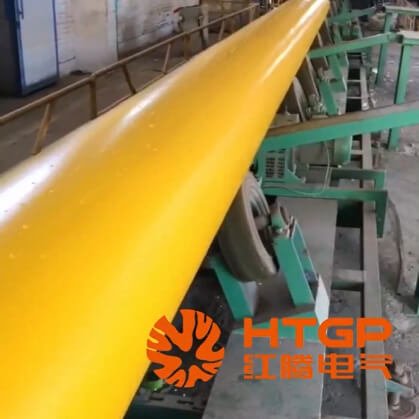
Contact Details
https://api.whatsapp.com/send/?phone=008617538889778&text&type=phone_number&app_absent=0
The pipeline anti-corrosion production line is a production facility specially used for pipeline anti-corrosion treatment, which aims to extend the service life of the pipeline and reduce damage and maintenance costs caused by corrosion. The following is a detailed introduction to the pipeline anti-corrosion production line:
I. Basic Concepts The pipeline anti-corrosion production line consists of a series of specialized equipment and process flows, which are designed to effectively treat the pipeline with anti-corrosion. The production line usually includes key links such as pipeline pretreatment, anti-corrosion coating coating, curing and quality inspection.
II. Main equipment
Pretreatment equipment: used to clean the surface of the pipeline, remove rust and oil stains to ensure that the anti-corrosion coating can be firmly attached. Common equipment includes shot blasting machines and sand blasting machines.
Anti-corrosion coating coating equipment: The anti-corrosion coating is evenly applied to the surface of the pipeline. The equipment types include sprayers and extruders, depending on the type of coating used.
Curing equipment: After coating, the coating needs to be fully cured by heating or natural drying to achieve the expected anti-corrosion effect.
Quality inspection equipment: used to detect the quality of the pipeline after anti-corrosion treatment to ensure that the coating meets the standard requirements. Commonly used inspection equipment includes coating thickness detectors and leak detectors.
III. Process flow
Pipeline pretreatment: Thoroughly clean the surface of the pipeline to remove impurities such as rust and oil.
Anti-corrosion coating: Select appropriate anti-corrosion coating according to the pipeline material and use environment, and apply it evenly to control the thickness and uniformity of the coating.
Curing treatment: The coating is fully cured by heating or natural drying. The curing time and temperature need to be adjusted according to the characteristics of the coating.
Quality inspection: The coating thickness, adhesion and leak points of the pipeline after anti-corrosion treatment are tested to ensure that the coating quality meets the standards.
IV. Application field Pipeline anti-corrosion production lines are widely used in industries such as petroleum, natural gas, chemical industry, water supply and heating. Pipelines in these fields are often faced with harsh environments such as high temperature, high pressure and corrosion, so strict anti-corrosion treatment is required to improve their service life and safety.
V. Advantages and Significance
Extend the service life of pipelines: Anti-corrosion treatment significantly reduces damage and maintenance costs caused by corrosion, thereby extending the service life of pipelines.
Ensure safe production: Anti-corrosion treatment reduces the occurrence of safety accidents such as pipeline leakage, ensuring the smooth progress of production activities.
Reduce environmental pollution: Waste and leaked substances generated by corrosion may pollute the environment, and anti-corrosion treatment helps reduce the generation and emission of these pollutants.
In summary, pipeline anti-corrosion production lines play an important role in the field of pipeline anti-corrosion, which can improve the service life and safety of pipelines, reduce maintenance costs and environmental pollution risks. With the advancement of science and technology and the enhancement of environmental awareness, these production lines are expected to be more widely used and developed.
Pipeline corrosion protection lines are designed to apply protective coatings to pipelines to prevent corrosion, which is a significant problem for infrastructure that transports fluids such as oil, gas and water. Here is a brief overview of these lines and why they are important:
Purpose
Pipelines are often exposed to harsh environmental conditions that can lead to corrosion, which can cause structural damage and potential leaks. Anti-corrosion coatings are essential to extend the life of the pipeline and maintain its integrity.
Key Components and Processes
Surface Preparation:
Cleaning: The surface of the pipeline needs to be cleaned to remove rust, dirt and other contaminants. This can be done by sandblasting, chemical cleaning or mechanical brushing.
Surface Treatment: The surface may be roughened to improve adhesion of the coating.
Coating Application:
Primer Application: Primers are usually applied first to enhance adhesion between the pipeline and the primary corrosion protection coating.
Primary Coating: Several types of coatings can be used, including:
Epoxy Coating: Provides excellent adhesion and resistance to chemicals and moisture.
Polyethylene/Polypropylene Coating: Widely used due to its durability and flexibility.
Fusion Bonded Epoxy (FBE): Applied in powder form, it bonds to the pipe by heating.
Application Method: Depending on the type of coating and the size of the pipe, the coating can be applied by spray gun, roller or by dipping the pipe into a coating bath.
Curing and Drying:
Curing: The coating must cure or harden to achieve its full protective properties. This may involve heating (for thermosetting coatings) or simply allowing the coating to dry naturally.
Inspection: Coated pipes are inspected for uniformity, thickness and defects, including visual inspection, thickness measurement and adhesion testing.
Quality Control:
Testing: Ensures that the coating meets the required standards through rigorous testing, which may include checks for adhesion, flexibility and resistance to environmental conditions.
Documentation: Detailed records of the coating process, materials used and test results are kept.
Handling and Storage:
Protection: Once coated, the pipes need to be handled and stored carefully to prevent damage to the coating prior to installation.
Importance
Corrosion protection: The main goal is to protect pipelines from corrosion, preventing leaks, environmental pollution and expensive repairs.
Extended service life: Properly coated pipelines have significantly longer service life, reducing the need for frequent replacement.
Safety: Anti-corrosion coatings help maintain the safety of pipelines and prevent failures that can have serious consequences.
Types of coatings used
Epoxy coatings: Known for strong adhesion and chemical resistance.
Polyethylene/Polypropylene coatings: Provide physical protection and are flexible.
Fusion-bonded epoxy coatings (FBE): Provide excellent protection and are often used in harsh environments.
In summary, pipeline anti-corrosion production lines ensure that pipelines are coated with a protective layer to prevent corrosion, thereby enhancing their durability, safety and overall performance.
—————————————————————————————————————————–
How are pipelines protected from corrosion?
What is top of line corrosion pipeline?
How do you detect corrosion in a pipeline?
What causes corrosion in oil pipelines?